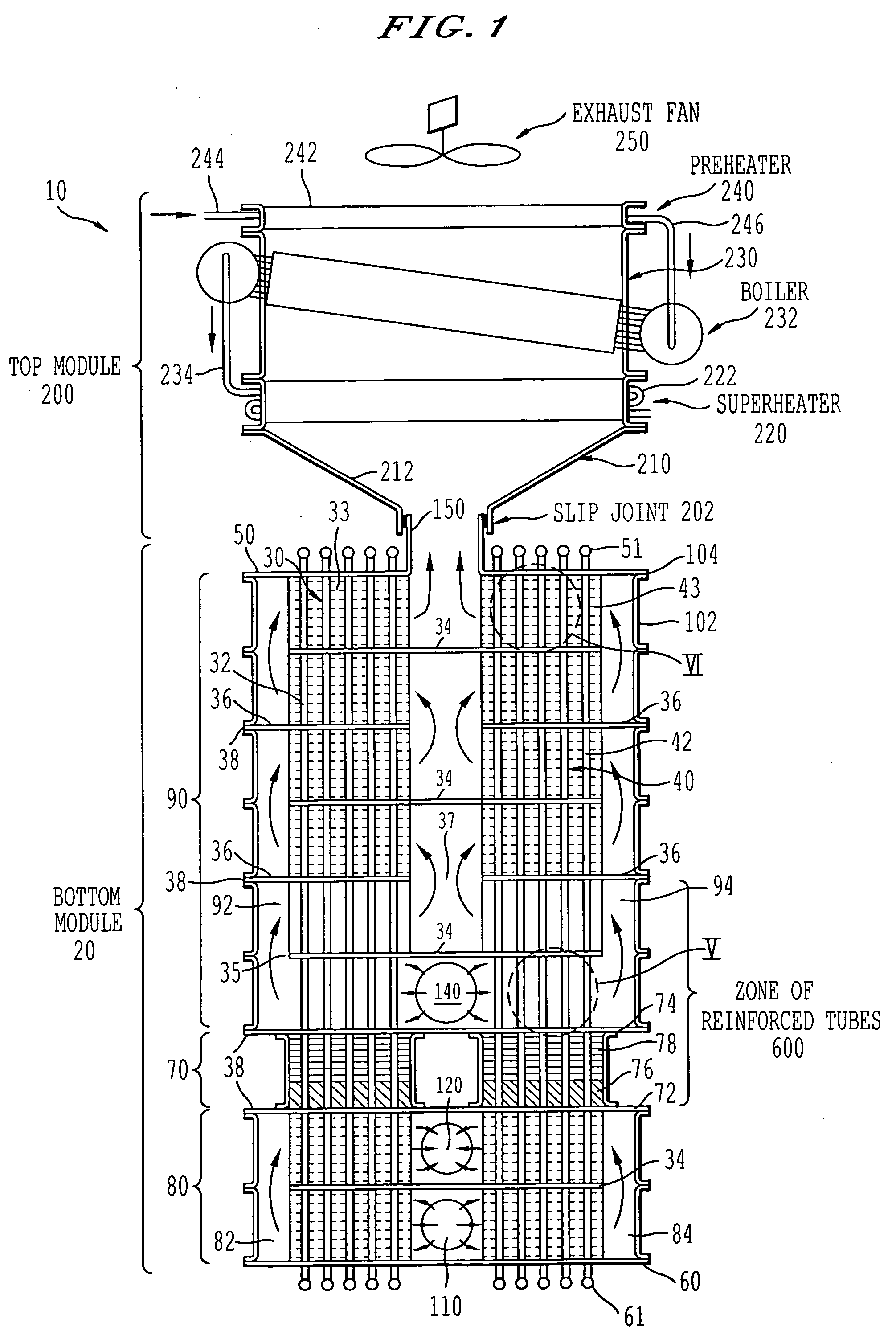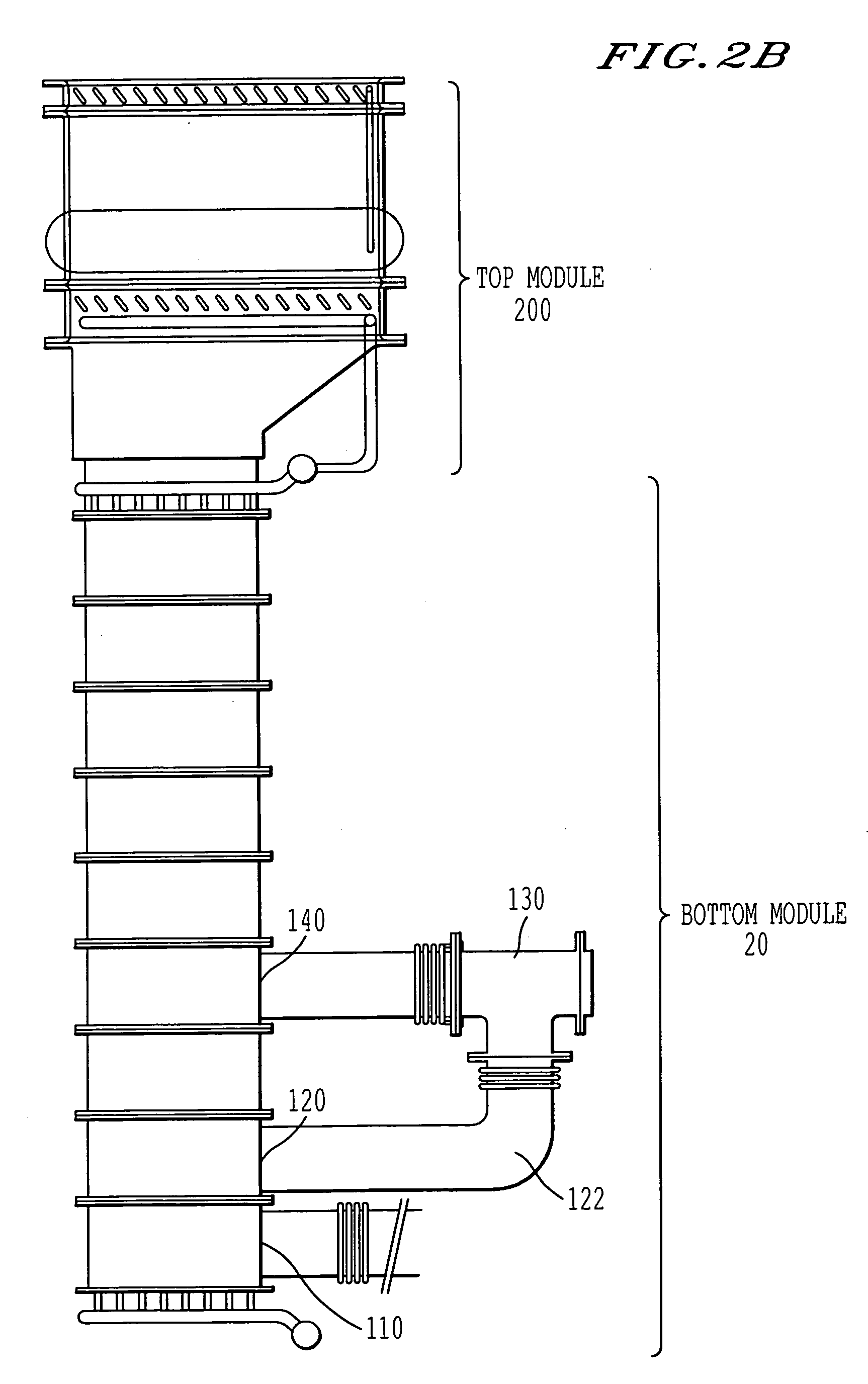Heat exchanger having plural tubular arrays
a technology of heat exchangers and tubular arrays, which is applied in the direction of indirect heat exchangers, lighting and heating apparatus, energy input, etc., can solve the problems of large stress on baffles and pan ductwork, premature failure, and insufficient heat exchanger stage area, so as to facilitate accurate dynamic control of process temperature and reduce pressure inside the heat exchanger , the effect of improving heat recovery
- Summary
- Abstract
- Description
- Claims
- Application Information
AI Technical Summary
Benefits of technology
Problems solved by technology
Method used
Image
Examples
Embodiment Construction
[0023] Embodiments of the present invention will be described hereinafter with reference to the accompanying drawings. In the following description, the constituent elements having substantially the same function and arrangement are denoted by the same reference numerals, and repetitive descriptions will be made only when necessary.
[0024]FIG. 1 shows a heat exchanger 10 including a bottom module 20 having a first tubular heat exchanger core 30 and a second tubular heat exchanger core 40. The first core 30 includes an array of substantially-parallel conduits or tubes 32, which are sealingly connected between a first tubesheet 50 and a second tubesheet 60. The second core 40 includes an array of substantially-parallel conduits or tubes 42, which are sealingly connected between the first tubesheet 50 and the second tubesheet 60. A first fluid flows from one of a plurality of inlet manifolds 51 provided adjacent to the first tubesheet 50, through tubes of the array of tubes 32 and the ...
PUM
| Property | Measurement | Unit |
|---|---|---|
| temperature | aaaaa | aaaaa |
| temperature | aaaaa | aaaaa |
| temperature | aaaaa | aaaaa |
Abstract
Description
Claims
Application Information
 Login to View More
Login to View More - R&D
- Intellectual Property
- Life Sciences
- Materials
- Tech Scout
- Unparalleled Data Quality
- Higher Quality Content
- 60% Fewer Hallucinations
Browse by: Latest US Patents, China's latest patents, Technical Efficacy Thesaurus, Application Domain, Technology Topic, Popular Technical Reports.
© 2025 PatSnap. All rights reserved.Legal|Privacy policy|Modern Slavery Act Transparency Statement|Sitemap|About US| Contact US: help@patsnap.com



